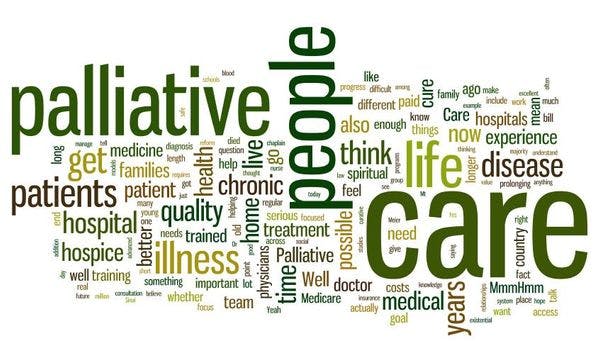World Hospice and Palliative Care Day - Why it matters!
The purpose of International Hospice and Palliative Care Day, like all the other “days’ identifying vulnerable populations or causes to celebrate, is to draw attention to the unique and wonderful vocation of hospice and palliative care providers around the world. Not only do communities need to support those who take care of the most vulnerable now, communities need to train more of them, so family members, friends, and neighbours etc. are taken care of in the future. The demographic shift toward ageing societies, which is taking place throughout the world, the increasing number of people suffering from non-communicable diseases (NCDs) and almost global lack of access to pain medicine, has made hospice and palliative care an urgent policy priority.
Palliative care is not just for the dying, nor is it just for cancer patients. It is a healthcare approach that serves people who are seriously ill, as well as their caregivers. It can be given at home or in the hospital. Government or private insurance should cover it. Palliative care is a holistic approach to life-threatening illness that aims to add quality of life, and provide wrap around services when patients and families are attempting curative treatments, as well as when curative treatments are no longer beneficial. Palliative care teams should address physical symptoms as well as psychosocial or spiritual problems.
Palliative care requires access to medicines that will relieve acute physical and emotional pain and symptoms, medicines that are tightly restricted by drug control laws and in many countries. The World Health Organization estimates that more than 80% of the world’s people live in countries where per capita consumption of medicines for pain and palliative care is “low to inadequate”. That means that people suffering from advanced cancer, AIDS, and other types of serious illness have limited access to any painkillers stronger than aspirin.
Within only ten years, there will be one billion older people in the world. Policymakers need to be considering how to build, train, and budget for the workforce needed to provide hospice and palliative care for elders, as well as for terminally ill children and adults. The challenge of getting the public, civil society, and politicians to pay attention to the demographic shift that is taking place is similar to getting them to pay attention to climate change. It’s real, it’s here, but most people put off thinking about ageing and getting ill, let alone terminally ill, until they have to.
World Hospice and Palliative Care day asks individuals and communities to think about it, to learn more about local, national, and global initiatives can make palliative care universally available, and to hold policy makers and governments accountable for taking appropriate action. World Day might also encourage people who have the time and feel they could be of service, to sign up to train as a hospice volunteer if there is a nearby program. Volunteering is a great way to learn about hospice and palliative care and to accompany patients and families through challenging times.
For more information, see the World Hospice and Palliative Care day website for more information about World Day.
By Katherine Irene Pettus, PhD, Policy Officer, International Association of Hospice and Palliative Care (IAHPC)
Keep up-to-date with drug policy developments by subscribing to the IDPC Monthly Alert.
